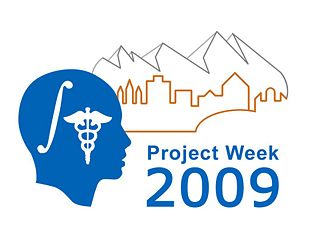Difference between revisions of "Two-tensor tractography in Slicer using Python and Teem"
| Line 27: | Line 27: | ||
<h1>Approach, Plan</h1> | <h1>Approach, Plan</h1> | ||
We are integrating the Two-Tensor Streamline Tractography into Slicer. The complete details on the method are summarized in [1]. Our approach for this project week will focus on the following: | We are integrating the Two-Tensor Streamline Tractography into Slicer. The complete details on the method are summarized in [1]. Our approach for this project week will focus on the following: | ||
| − | |||
| − | + | The implementation of our project is carried out in Python. The Two-Tensor Tractography calls are already implemented in the Teem library and can be accessed using the Python wrappings for the Teem. | |
| − | |||
| − | |||
| − | |||
</div> | </div> | ||
| Line 40: | Line 36: | ||
<h1>Progress</h1> | <h1>Progress</h1> | ||
| − | |||
</div> | </div> | ||
Revision as of 03:45, 16 December 2008
Home < Two-tensor tractography in Slicer using Python and Teem Return to Project Week Main Page |
Key Investigators
- BWH: Madeleine Seeland
- BWH: Carl-Fredrik Westin
- BWH: Gordon Kindlmann
Objective
Our objective is to finalize the integration of Two-Tensor Tractography into Slicer and to test it on diverse DWI datasets. Furthermore the optimal parameter settings to run the algorithm needs to be investigated.
Approach, Plan
We are integrating the Two-Tensor Streamline Tractography into Slicer. The complete details on the method are summarized in [1]. Our approach for this project week will focus on the following:
The implementation of our project is carried out in Python. The Two-Tensor Tractography calls are already implemented in the Teem library and can be accessed using the Python wrappings for the Teem.
Progress
References
[1] Qazi AA, Radmanesh A, O'Donnell L, Kindlmann G, Peled S, Whalen S, Westin CF, Golby AJ. Resolving crossings in the corticospinal tract by two-tensor streamline tractography: method and clinical assessment using fMRI. Neuroimage 2008